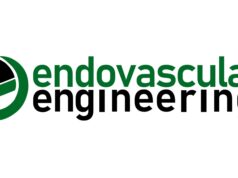A new study has found that intensive care unit patients with swine flu (H1N1) and acute respiratory distress syndrome (ARDS) were 33 times more likely to develop venous thromboembolism (VTE), unless prescribed with an anticoagulant when admitted.
The findings were published by Andrea T Obi (University of Michigan, Ann Arbor, USA) and colleagues in the Journal of Vascular Surgery: Venous and Lymphatic Disorders, detailing the results of an observational cohort study of 71 patients at a single centre.
“To our knowledge, this is the first study to document VTE incidence in adult intensive care unit patients with severe acute respiratory distress syndrome due to H1N1 viral pneumonia,” noted Obi in a report of the study by the Society for Vascular Surgery. ‘This high rate of VTE was encountered despite empirical anticoagulation in more than half of our cohort.” she added.
The severity of swine flu is manifested by non-pulmonary complications, mainly VTE. In response to a clinical report from the University of Michigan in 2009, The Centers for Disease Control and Prevention issued a warning regarding the “development of a hypercoaguable state and fatal thromboembolic events” for patients with this disease.
Obi et al analysed the 71 patients admitted to the surgical intensive care unit (ICU) with severe ARDS with possible H1N1 viral pneumonia between 2009–2010.
In this cohort, the empiric use of anticoagulation involved systemic heparin anticoagulation (n=39, 55%) vs. VTE prophylaxis (n=32, 45%). The overall incidence of thromboembolic events was 37%, much higher than 6% observed in their ICU patients overall. Following evaluation for H1N1 infection, they observed 36 H1N1 positive patients, of which 28% presented with deep venous thrombosis (DVT), 28% with pulmonary embolism (PE), and 44% with VTE. Thirty-five patients tested negative for H1N1, of which 23% had DVT, 9% had PE, and 29% VTE.
Independent risk factors for VTE included H1N1 infection (OR, 17.9), bacterial pneumonia (OR, 6.0) and vasopressor requirement (OR, 13.1).
Importantly, those with H1N1 who did not receive therapeutic anticoagulation were 33 times more likely to have any VTE event.
“Whereas a relationship between H1N1 influenza and propensity toward thrombotic events has been suggested by clinical reports and animal studies, a relationship between seasonal influenza and thromboembolic complications has previously not been proved. Our data are the first to confirm such a relationship,” she added.
Their study did not observe a reduction in overall mortality with empirical system heparin anticoagulation. However, Obi suggested, “other benefits to VTE prevention exist, such as elimination of potential post-thrombotic syndrome and pulmonary hypertension.” She notes that “the small sample size and otherwise non-standardised management of the patients may have contributed to lack of mortality benefit.”
Ultimately this follow-up study by a group with significant experience in this area suggests consideration of systemic anticoagulation in critically ill patients with influenza A H1N1 viral pneumonia and severe ARDS, the Society for Vascular Surgery states in a press release.












